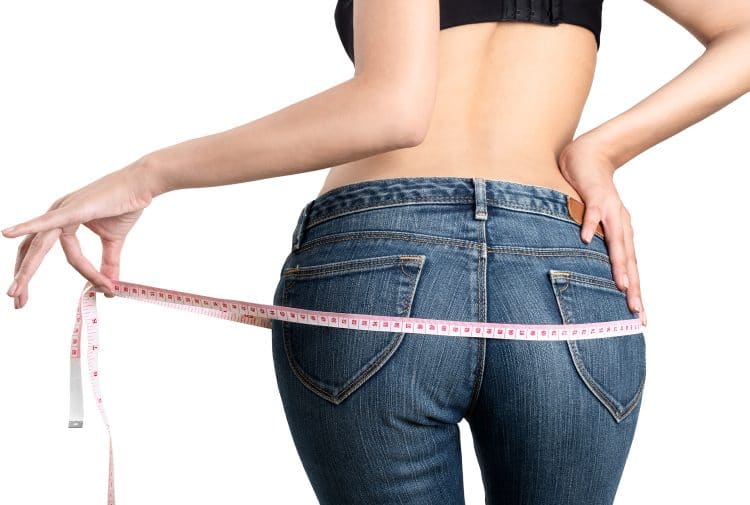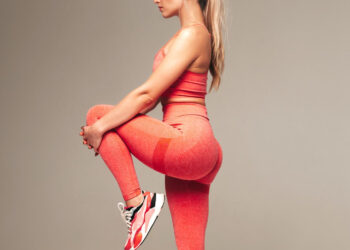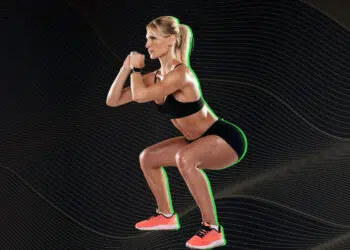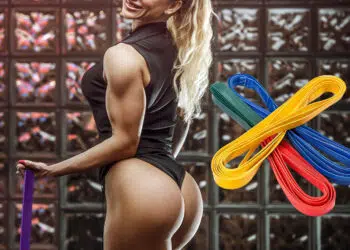Not so long ago, core training was THE major fitness industry trend. Entire workouts, group exercise classes, and even types of training equipment were dedicated to increasing core strength and stability. It was all core, all the time.
While no bad thing, this did lead to a certain amount of neglect of the other muscle groups.
Currently, thanks to many social media stars and influencers, the butt is the muscle group of the day. Everyone, both men and women, want a big, round butt that really fills their clothes.
In an effort to build a better butt, a lot of people are focusing all their training on the gluteus maximus muscle, which is your primary hip extender. While the gluteus maximus IS your largest glute muscle, it doesn’t work alone, and there are several other muscles you need to work on to sculpt the perfect butt.
In this guide, we explain why and how to do fire hydrants. This simple yet effective exercise is the ideal supplement to all those hip extension exercises you are probably doing. And even if you are more interested in performance than appearance, this is still a worthwhile addition to your butt workouts.
Level Up Your Fitness: Join our 💪 strong community in Fitness Volt Newsletter. Get daily inspiration, expert-backed workouts, nutrition tips, the latest in strength sports, and the support you need to reach your goals. Subscribe for free!
Fire Hydrant – Muscles Worked
The fire hydrant is a bodyweight exercise that involves abduction and external rotation of the hip joint. This seemingly simple movement uses a lot of different muscles, some of which are pretty small and superficial (deep). The main muscles trained during fire hydrants are:
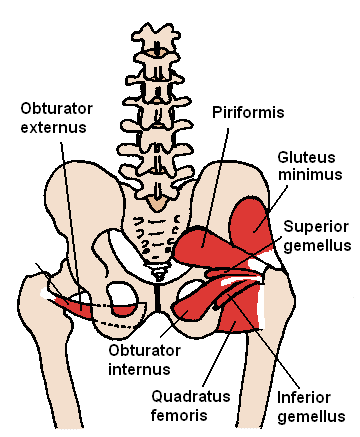
Gluteus maximus – while mostly thought of as a hip extender, the lower fibers of your glutes also play a part in external hip rotation. Your glutes are basically your butt.
Gluteus medius and minimus – located on the side of your hip, these muscles are involved in abduction and external rotation of your hip joint. They’re especially active when your hip is flexed, as they are during fire hydrants.
Psoas major and minor are located on the front of your hip. When the hip joint is flexed, these hip flexor muscles become lateral hip rotators.
Sartorius – also known as the tailor’s muscle, located in the upper thigh, the sartorius is another muscle involved in lateral rotation of the hip.
Piriformis – this is a deep, powerful hip muscle that can cause a condition called piriformis syndrome when it becomes too tight. Like many hip muscles, the piriformis is involved in both external rotation of the hip and hip abduction.
The other hip rotators are smaller and less known, namely:
- Gemellus superior
- Gemellus inferior
- Obturator internus
- Obturator externus
- Quadratus femoris
How to Do Fire Hydrants
Get more from fire hydrants while keeping your risk of injury to a minimum by following these step-by-step guidelines:
- Adopt the quadruped position with your knees directly under your hips and your hands under your shoulders. Brace your core and make sure your spine is neutral, i.e., your lower back is slightly arched. Tuck your chin in and gently extend your neck.
- Keeping your knee and hip bent to 90-degrees, lift one leg up and out to the side. Keep the rest of your body stationary. Raise your leg to about 45-degrees. Make sure your knee and hip remain aligned.
- Pause with your leg raised for 1-2 seconds and then, smoothly and controlled, lower your leg back down.
- Repeat for the desired number of reps and then swap legs.
Fire Hydrant Benefits and Drawbacks
Unsure if fire hydrants are worth adding to your workouts? Consider these benefits and drawbacks and then decide!
Benefits:
No equipment required – you can do fire hydrants anywhere and anytime, making them ideal for home workouts. With no special equipment needed, fire hydrants are a great excuse-free exercise.
Easy on the joints – unlike a lot of glute exercises, the fire hydrant exercise is very joint-friendly. The range of movement is not particularly large, you’ll be using less than your body weight for resistance, and it’s a non-weight-bearing exercise. This means that fire hydrants are suitable for most exercisers, even those with hip pain.
A rounder butt – developing the muscles on the side of your hips will give your butt a rounded, more peach-like appearance.
Increased hip stability – if your knees tend to fall inward when you run, or do squats and lunges, doing fire hydrants will help. They target the muscles responsible for stabilizing your hips. More stable hips are less prone to wear and tear and injuries.
Easy to learn – compared to many other glute exercises, fire hydrants are easy to learn and master. That’s why they often feature in group exercise classes.
Level Up Your Fitness: Join our 💪 strong community in Fitness Volt Newsletter. Get daily inspiration, expert-backed workouts, nutrition tips, the latest in strength sports, and the support you need to reach your goals. Subscribe for free!
Drawbacks:
While fire hydrants are a mostly beneficial glute exercise, there are also a few drawbacks to consider:
A tendency to cheat – instead of doing this exercise slowly and smoothly, a lot of people tend to fling their leg up and out to the side, taking the stress away from the target muscles. Doing this exercise too quickly makes it less effective. Instead, it should be done using controlled movements to ensure the target muscles do all the work.
Lower back issues – keeping your hips stationary and your spine neutral during fire hydrants requires a strong core. If you are lacking core strength, fire hydrants could cause lower back pain. Develop your static core stability by doing planks and dead bugs before progressing to fire hydrants. Also, make sure you stop your set if you feel you cannot effectively stabilize your lower back.
Limited overload – fire hydrants involve a short lever and a relatively small range of motion, which means they’re not an especially difficult exercise. Once you can do 20+ reps, they cease to be particularly effective. You can make them more challenging by wearing ankle weights or using a resistance band. When done just with bodyweight, you will probably soon find this exercise is no longer provides enough of a challenge unless you resort to doing very high-rep sets.
7 Fire Hydrant Variations and Alternatives
Fire hydrants are a highly effective glute and hip exercise, but that doesn’t mean you need to do them all the time. There are several variations and alternatives you can use to keep your workouts productive and interesting:
1. Fire Hydrant with Booty Band
If you can do 20+ fire hydrants using your bodyweight, you’re probably ready to kick the intensity up a notch by using a booty band. Booty bands are wide, short resistance band worn above or below your knees to make lower body exercises more glute-centric.
Do the fire hydrant exercise as described above but with a booty band around your lower thighs or upper shins.
2. Clamshell
Clamshell exercise is a great exercise designed to target the hip abductors and hip external rotators.
How to do it:
- Lie down on your side. Stack your hips and bend your knees to 45-degrees.
- Rest your head on your lower arm and brace your core to stabilize your spine and pelvis.
- While keeping your feet together, lift and rotate your upper knee outward as high as possible without moving your hips or pelvis. Do NOT lean backward.
- Return to the starting position and repeat before rolling over and changing legs.
- The accompanying video shows that you can also do this exercise with a booty band for added resistance.
3. Booty Band Goblet Squat
Squats are mostly thought of as a quads exercise. However, they’re also pretty good for your butt. Using a booty band means they also work your external hip rotators and abductors, albeit statically. If you are in a rush but still want to work your entire lower body in one, time-efficient exercise, booty band goblet squats would be an excellent choice.
How to do it:
- Put your band around your upper shins or lower thighs. Step out, so your feet are roughly shoulder-width apart, toes turned slightly outward. Push your knees out against the band. Hold a dumbbell or kettlebell in front of your chest.
- Push your hips back and squat down until your thighs are roughly parallel to the floor. Do not round your lower back, and remember to keep pushing your thighs outward.
- Stand back up and repeat.
- You can also do this exercise without the weight for an easier workout.
4. Lateral Single-leg Wall Ball Squat
As soon as you switch from a bilateral stance (two legs) to a unilateral stance (single leg), your deep hip muscles have to step up and start working harder to stabilize your pelvis. That’s why single-leg exercises like lunges and step-ups are such good butt builders. Here’s another single-leg exercise to add to your workout library: lateral single-leg wall ball squats.
How to do it:
- Stand sideways onto a wall. Place a stability ball between your hips and the wall and lean against it.
- Bend your innermost leg and use your outer leg to push your hips against the ball. Brace your abs.
- Bend your supporting leg and squat down until your thighs are roughly parallel to the floor.
- Stand back up and repeat.
- Do the same number of reps on both legs.
5. Plie Squat
Taking your squat stance out wider than shoulder-width increases outer hip and glute engagement. Make sure that your toes are pointing the same way as your knees. Imagine you are screwing your feet outward and into the floor to maximize hip engagement.
How to do it:
- Stand with your feet wider than shoulder-width apart. Turn your toes outward to about 45 degrees. You can turn your feet out more if your flexibility allows. However, make sure this movement comes from your hips and NOT your knees. Your knees and toes should point in the same direction.
- Stand up tall, brace your abs, and look straight ahead. You can also raise your arms out to the side or in front of you for balance if you wish.
- Keeping your torso upright, bend your legs, push your knees out, and descend until your thighs are roughly parallel to the floor. Try not to lean forward, and do not allow your lower back to round.
- Stand back up and repeat.
Read more about plie squat exercise here.
6. Frog Pump
Just like fire hydrants, frog pumps combine hip extension with abduction and external rotation, making it feel like a combination of hip thrusts and clamshells. The main advantage of frog pumps over fire hydrants is that this exercise works both legs simultaneously, making it a more time-efficient exercise.
How to do it:
- Lie down on your back on an exercise mat. Bend your knees and place the soles of your feet together, so you look not unlike a frog. Press your knees apart to engage your outer hips.
- Push your hips up by driving the outsides of your feet into the ground.
- Contract your glutes at the top of the movement.
- Return to the starting position and repeat.
- You can make this exercise harder by resting and holding a weight on your lower abdomen.
7. Single Leg Romanian Deadlift
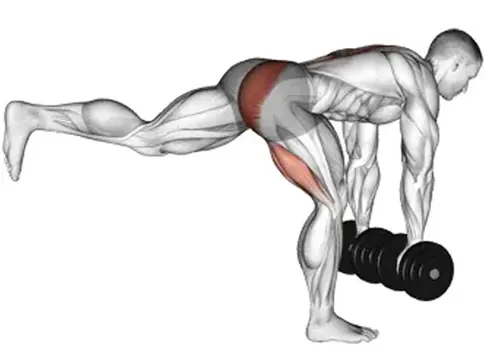
Single leg Romanian deadlifts are often seen as just a posterior chain exercise. But, by standing on one leg, your hip abductors and rotators have to get busy stopping your knees from dropping in while keeping your pelvis stable. As such, this is a very worthy alternative to fire hydrants, even though it looks radically different. As an added benefit, the single-leg Romanian deadlift is also great for increasing mobility and balance.
How to do it:
- Stand with your legs together and your arms by your sides. Shift your weight over onto one leg and bend your knees slightly for balance. Brace your abs.
- Hinging from your hips, lean forward and reach down toward the floor. Do not round your lower back. Extend your non-weight-bearing leg out behind you as a counterbalance.
- Stand back up and repeat.
- Make this exercise harder by holding one or two dumbbells or a barbell.
Learn more about single-leg Romanian deadlifts here.
Fire Hydrants – Wrapping Up
Fire hydrants are one of those exercises that looks too easy to be beneficial. But, if you haven’t done much hip abduction/external rotation training before, you’ll be surprised just how demanding this exercise is.
Most butt exercises work in the sagittal plane, i.e., forward and backward. However, if you want to fully develop your hip and butt muscles, your workouts should also feature movements in the frontal and transverse planes.
Fire hydrants DO make you look like a male dog cocking his leg to pee, but don’t let that put you off. This is a legitimate exercise that’s good for your butt and hips.
Interested in measuring your progress? Check out our strength standards for Hip Abduction, Goblet Squat, Deadlift, and more.

